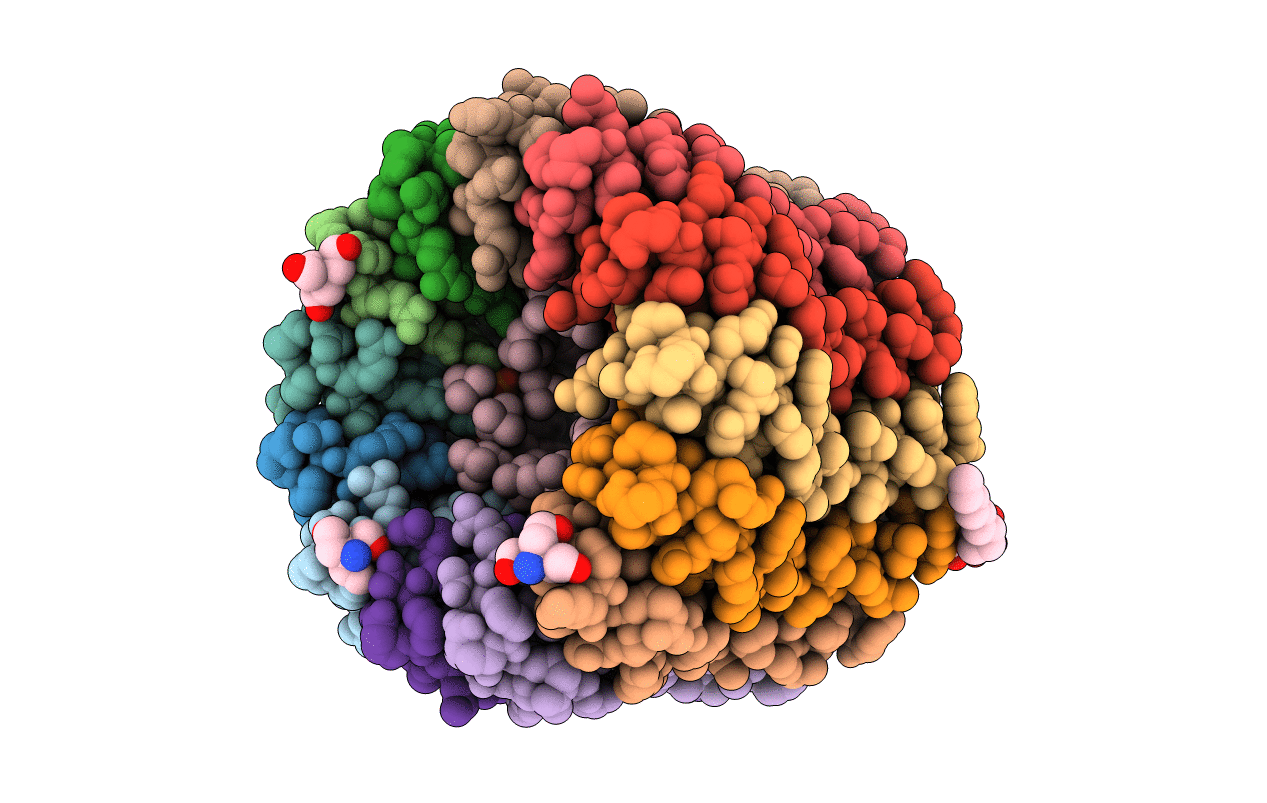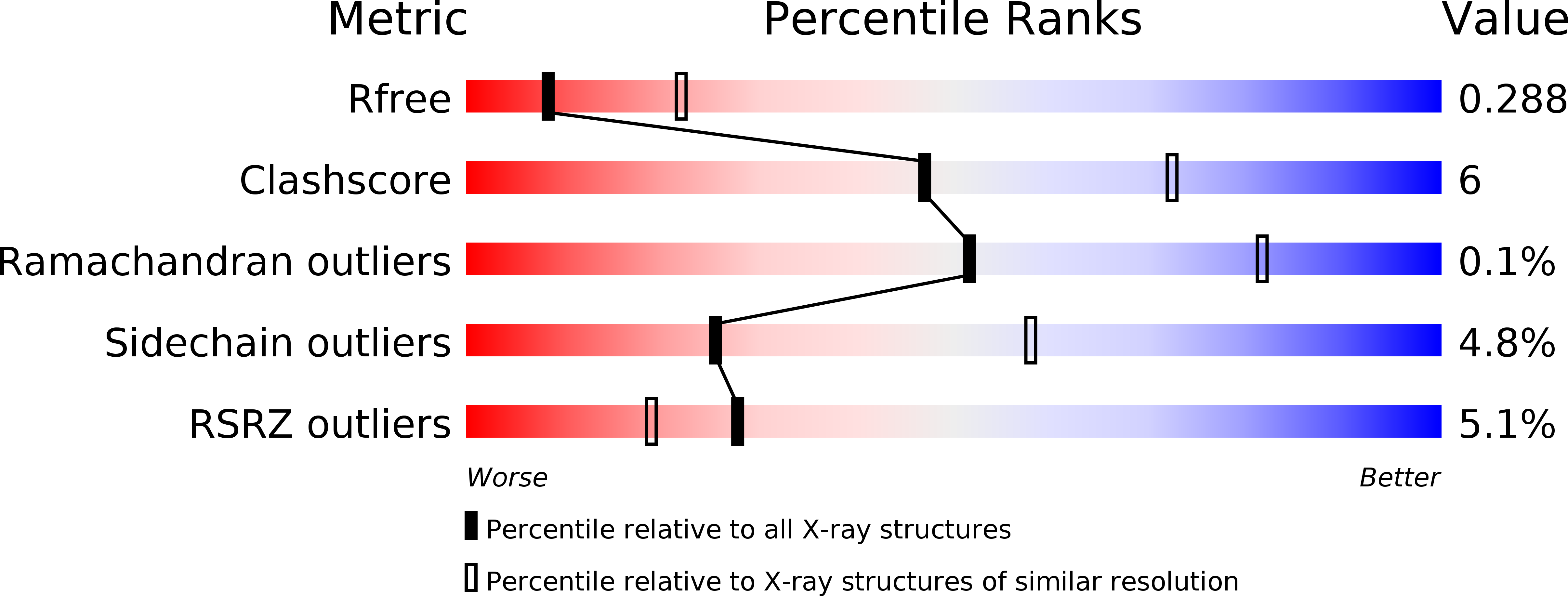
Deposition Date
2013-10-14
Release Date
2014-05-28
Last Version Date
2024-11-13
Entry Detail
PDB ID:
4CBJ
Keywords:
Title:
The c-ring ion binding site of the ATP synthase from Bacillus pseudofirmus OF4 is adapted to alkaliphilic cell physiology
Biological Source:
Source Organism:
BACILLUS PSEUDOFIRMUS OF4 (Taxon ID: 398511)
Method Details:
Experimental Method:
Resolution:
2.80 Å
R-Value Free:
0.28
R-Value Work:
0.23
R-Value Observed:
0.23
Space Group:
P 1 21 1


